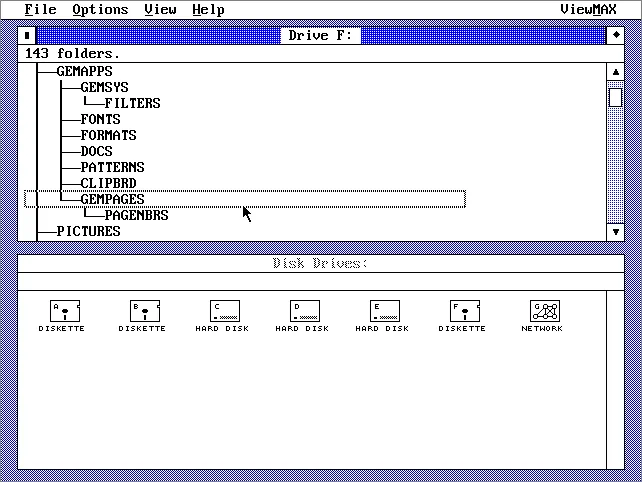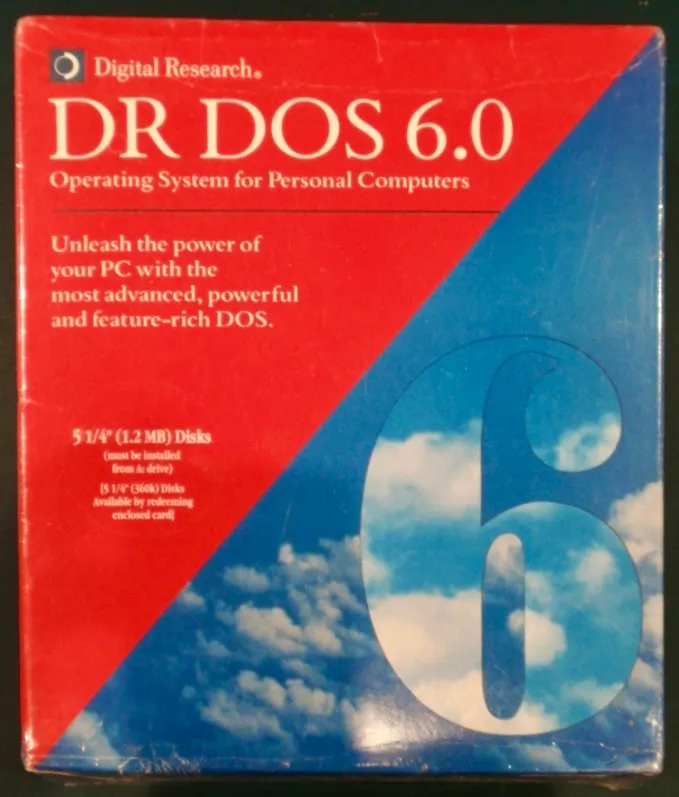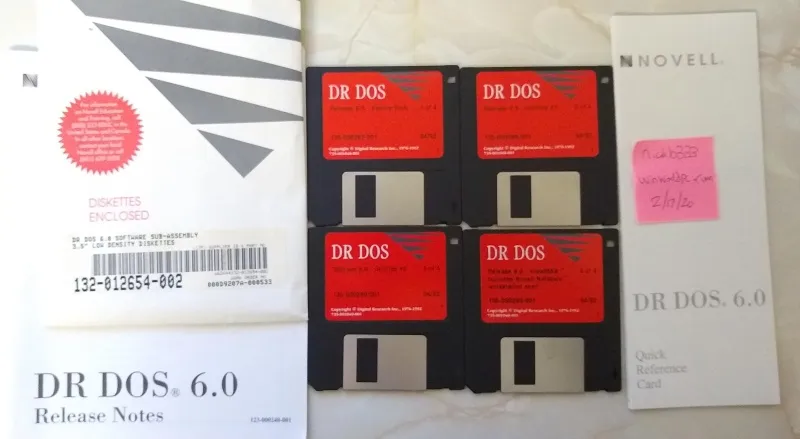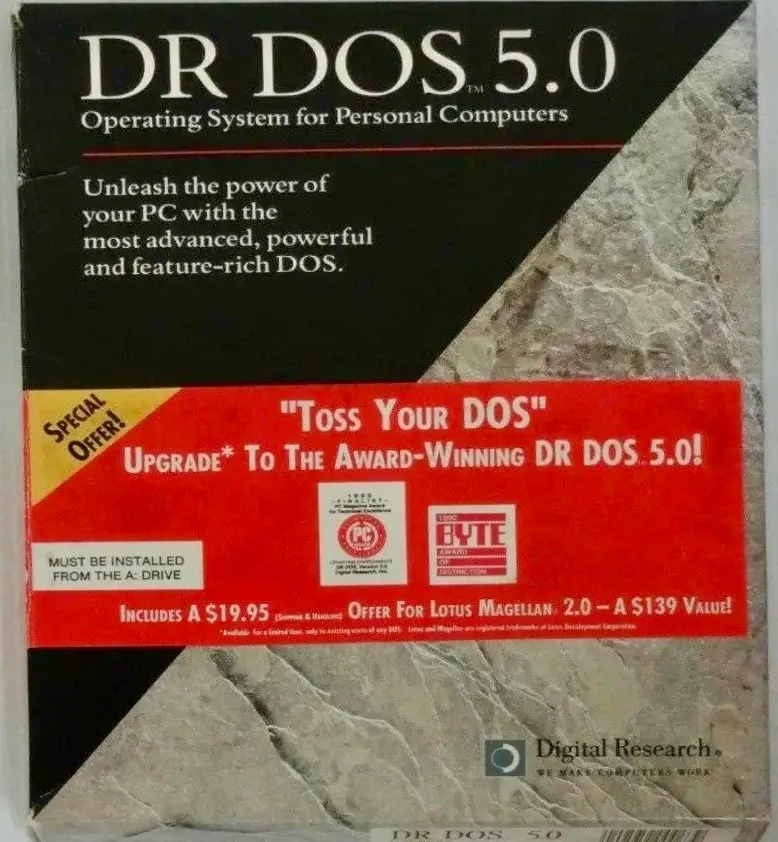The last of Digital Research
Digital Research Inc had been founded to sell CP/M in 1976 by Gary and Dorothy Kildall. The operating system quickly became the defacto for any computer built around either the Intel 8080 or Intel Z80 microprocessors, and it even became popular on the Apple II through the Microsoft SoftCard. With the transition to sixteen bit microprocessors over the first years of the 1980s, Kathryn Strutynski led the DRI effort to port CP/M to these new hardware platforms and make it a more robust and more capable operating system. Yet, despite these efforts, it was quite obvious by around 1984 that MS-DOS and PC-DOS were winning the 8086 and 8088 market, and it was further obvious to many that the Intel chips were winning the hardware war. This is partially due to the IBM PC 5150 which sold more than three million units between 1981 and 1987. The XT, AT, and other derivative models didn’t sell quite as well, but they did further expand the total addressable market for PC-DOS. This market and the IBM brand created pressure for other companies to create compatible systems at lower price points, and this most certainly happened. From 1981 to 1989, over sixty million more-or-less IBM-compatible computers were sold on top of around seven and a half million non-PS/2 IBM machines. The next largest market in the 1980s was the Commodore 64 and 128 market where Commodore sold over twelve million units, and then Apple sold roughly six million Apple II machines. Competing with any of these was a tall order in the 1980s, and Digital Research had to change course to remain in the fight.
This kind of work had been done with the short-lived DOS Plus which was built from CP/M-86 Plus and Concurrent DOS but as a single-user, multitasking, sixteen bit CP/M implementation compatible with MS-DOS 2.11 and capable of reading floppy disks from both systems. This system was developed by the UK-based OEM Support Group of DRI, and it was first released in 1985.
DOS Plus was simply not quite the product that DRI and their OEM partners needed. Kazuhiko Nishi of ASCII Corporation struck a deal with DRI for around a million USD to have DRI build a PC-DOS compatible operating system. This new system would be a major departure from the CP/M nature of previous releases. First, it would ship with a FAT filesystem that included large disk support (FAT16B), and second, some parts of the system would be completely rewritten and restructured. In this latter regard, the CP/M BIOS (or XIOS) was replaced with an IBM-compatible BIOS called DRBIOS.SYS, and the BDOS kernel was called DRBDOS.SYS. This system had all multiuser elements removed much like DOS Plus, but it continued to use the Concurrent DOS kernel (version 6). Of course, with the legacy of a more advanced operating system in this code base, the new system would offer certain things that PC-DOS did not such as command history, extended command help, and more efficient memory use. This was released as DR DOS 3.31 on the 28th of May in 1988. Despite reporting itself to applications as PC-DOS 3.31, the BDOS kernel was version 6.0 showing the software’s origins. All available sources state that DR DOS 3.3x were OEM-only. This changed with version 3.40 released on the 25th of January in 1989. The more successful retail release was version 3.41 released in June of 1989. This version included tools that PC-DOS lacked at the time: XDIR, XDEL, PASSWORD, EMM386, EMMXMA, EDITOR, TOUCH, and VDISK. While being a good product certainly helped Digital Research see some early sales success, this release was certainly aided by the fact that neither IBM nor Microsoft sold DOS at retail at that time.
Microsoft MS-DOS 4 wasn’t well received by the public and to avoid any confusion with the Redmond product, Digital Research gave their next release a quinary version number. Still, the BDOS kernel version was 6.4. This version brought with it new commands: HMA (HYDES), EMS (EMM386), EDIT, VIEWMAX, LOCK, FILELINK, BACKUP/RESTORE, CACHE, MEMMAX, CURSOR, IDLE, SMARTDRV, and DRCACHE. DR DOS 5 also renamed the core system files. The DOS BIOS became IBMIO.COM, and the kernel became IBMDOS.COM. This was a huge release. ViewMAX was introduced as a file manager and was derived from DRI’s GEM graphical environment, load-high functions were introduced, memory management for 80386 machines was improved, disk caching was introduced, and power management for mobile machines was introduced. This last bit was through BatteryMAX which was controlled by IDLE ON or IDLE OFF (turning on power saving, or turning off power saving respectively). I haven’t actually found any drivers for this feature, but I think it’s rather impressive that Digital Research had built out the functionality in their operating system. DR DOS 5 was released in May of 1990, and its disk compression, caching, and load-high functions helped it become decently popular. By the end of the year, Digital Research had revenues over $40 million and employed two hundred seventy three people.

ViewMAX/1
On Wednesday, the 17th of July in 1991, Digital Research was sold to Novell becoming a wholly-owned subsidiary.
Digital Research, now owned by Novell, released DR DOS 6 in September of 1991. This released included TASKMAX, SuperStor, MEMMAX, DELWATCH, UNDELETE, DELPURGE, DISKMAP, DISKOPT, TOUCH, PCKWIK, DOSBOOK, LOGIN, LOCK, and UNFORMAT. Here, disk compression was now on-the-fly, reversing file deletions and disk formats was possible, and task switching was possible. Version 6 used Concurrent DOS kernel version 6.7 but it continued to report itself as PC-DOS 3.31 as versions before it had.

DR DOS 6 box

DR DOS 6
Novell introduced NetWare PalmDOS 1 to the market in November of 1992. This was based upon DR DOS 6 but was optimized for less powerful hardware, was embeddable in ROM, had support for PCMCIA devices, and included some Novell networking functionality.
Novell DOS 7 was released in December 1993. Getting to this release was somewhat messy within Novell. Initially, as noted in my article on Novell, this was to have been a graphical operating system running on Vladivar and using GEM. It then became a port of Mac OS System 7 to the PC, and then it was paired down to just another DOS release when those projects failed to produce fruit. Despite what happened, I personally view Novell DOS 7 as having been quite a successful product. It sold over a million copies quite quickly with thousands of retailers offering it to customers, and many OEMs bundling it with their machines. This was also a rather technologically advanced release. The first major change was the implementation of the DOS Protected Mode Services. This allowed device drivers and TSRs to load and execute in extended memory and in protected mode leaving lower conventional memory free for DOS applications. With this version, DR DOS also dropped SuperStor and adopted Stacker, EMM386 gained multitasking which could be exploited via TASKMGR. The operating system also gained HIMEM, SETVER, SERNO, DOSTUTOR, and NETWARS.
All of the Digital Research assets owned by Novell were purchased by Caldera on the 23rd of July in 1996. Following the acquisition, Caldera released OpenDOS 7.01 on the 3rd of February in 1997 which was essentially Novell DOS 7 sans most of the recent patches and without several useful utilities. Caldera then released OpenDOS 7.02 in December of 1997 and released that as Caldera DR-DOS 7.02 in March of 1998. These releases made DR DOS year 2000 compliant, fixed several bugs, and improved compatibility with Windows. DR DOS 7.03 was released on the 6th of January in 1999. Memory management was substantially improved, but otherwise there weren’t many changes.
Caldera split into three different companies on the 2nd of September in 1998 with Caldera Thin Clients being the part that kept Digital Research’s assets. They released GEM and ViewMAX under the GPL in April of 1999, and this company became Lineo on the 20th of July in 1999. Lineo released DR DOS 7.04 on the 19th of August in 1999, and then released version 7.05 on the 30th of November in 1999.
These releases were stripped down significantly and aimed at the embedded market. They did, however, bring full FAT32 and LBA support to DR DOS. Version 7.06 was soled only to OEMs by request. The main change for that version was that it could be booted from MS-DOS 7 boot sectors. Version 7.07 was largely a boot manager change (from what I understand) providing a sort of universal DOS and Windows manager.
Lineo’s fortunes quickly faded, but they did release CP/M and MP/M sources in October of 2001 prior to selling off all other assets. The Digital Research software properties reverted to Canopy Group (Lineo’s primary investor) and were then acquired by DRDOS Inc at the time doing business as DeviceLogics. Given the company’s name, it stands to reason that Bryan Wayne Sparks, Bryce Burns, and Troy Tribe founded the company in November of 2002 specifically to acquire the rights to DR DOS and other Digital Research software.
Under the ownership of DRDOS Inc, licenses of 7.03 were sold, and the company worked to bring a new version to market. DR DOS 8 was released on the 30th of March in 2004, and it brought some of the OEM enhancements such as FAT32 and LBA support together with DPMS enhancements and multitasking from Novell DOS 7. Version 8 was yet another version aimed at the embedded market.
DR DOS version 8.1 was most likely intended to serve as a return to form for DR DOS in October of 2005, but DRDOS Inc included FreeDOS code in the release without abiding by GPL terms and the release then ceased sales and distribution.
In the interval between Lineo going bust and DRDOS Inc starting business, Udo Kuhnt picked up the open-sourced bits of DR DOS 7 and began working on Enhanced DR-DOS 7.01.01. This later became EDR-DOS with the final version being EDR-DOS 7.01.08 WIP 2011 July released on the 21st of July in 2011. Over time, Kuhnt had improved partitioning and filesystem support, added LFN support, fixed many bugs, improved memory management, and even made some improvements to DPMS support. Kuhnt had also added HIFILES, HIBUFFERS, HIFCBS, HISTACKS, HILASTDRIVE, DDSCS, DOSDATA, XBDA, INSTALLLAST, DRFORMAT, DRSYS, and DRXCOPY. However, updates at drdosprojects.de ended on the 2nd of February in 2012.
DR DOS was a great product. It was superior to other DOS versions in many ways, and it is certainly possible that it could have been more successful were it not for Microsoft Windows having been so wildly successful. Starting with Windows 95, the majority of computer users simply didn’t much care about which DOS loaded Windows so long as it worked. There’s quite a bit of lore regarding legal battles and copyrights surrounding CP/M and DOS involving Microsoft and Digital Research. This has been covered in previous articles to some extent, but I am not really certain how much would have changed had Microsoft and Digital Research got on. Gates and Kildall had been quite friendly at one point, and we know that the two mutually chose not to work together due to differences in business practices and beliefs. Kildall chose to be quite a bit more friendly and less competitive while Gates very much chose to be competitive and at times a bit ruthless. Additionally, Kildall sold DRI rather than continue the fight, and DRI had never really attempted to combine DR DOS with GEM as a cohesive product to fight Windows before Windows became the ultimate ruler of the OS market following Windows 3.1’s release. Still, it was an absolutely brilliant product and part of me will always feel that it ought to have won.
- Karlston
-

 1
1



Recommended Comments
There are no comments to display.
Join the conversation
You can post now and register later. If you have an account, sign in now to post with your account.
Note: Your post will require moderator approval before it will be visible.